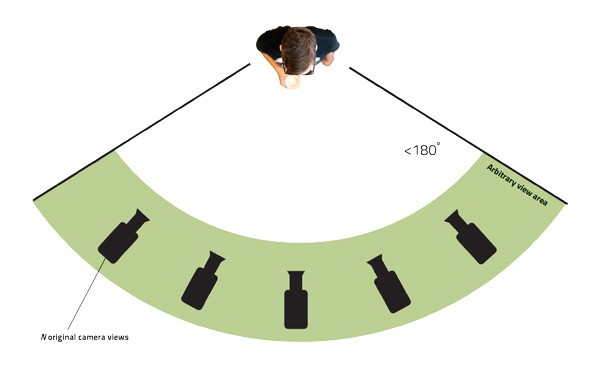Making 3D multi-view TV a reality
Research in 3DTV has been active for the past decades. Its popularity is growing rapidly driven by market forces and new technologies that are bringing down costs enabling a more widespread distribution. Normal 3D video uses only one camera to generate two video streams for each eye. Multi-view video allows the viewer to choose which angle they want to watch (pictured).
Multi-view video needs to process huge amounts of data since it needs to transmit many different camera angles of the same scene. If the 3D videos are being streamed in real time, the processing power needs grow even further. To reduce computer processing the multi-view plus depth concept was introduced. Using this idea not all the alternative videos are used. Instead a few are selected and the angles in between are filled using sophisticated computer algorithms. The challenge with this approach is to generate high quality videos at different angles whilst keeping the amount of data transmitted as low as possible.
To attempt to overcome these problems, Maverick Hili (supervised by Dr Ing. Reuben Farrugia) analysed the current state-of-the-art video coding standard called H.264. The idea is to compress the amount of data which is transmitted without losing video quality. To achieve a better compression, the depth information in a video was represented with a few parameters. The receiver then has to use these parameters to reconstruct the original depth information. Hili managed to improve compression using this technique, an important step to be able to stream live 3D video into our homes.
This research was performed as part of Masters in Telecommunications within the Faculty of ICT at the University of Malta. It was partially funded by the Strategic Educational Pathways Scholarship (Malta). This Scholarship is part-financed by the European Union — European Social Fund (ESF) under Operational Programme II — Cohesion Policy 2007–2013, “Empowering People for More Jobs and a Better Quality Of Life”.


